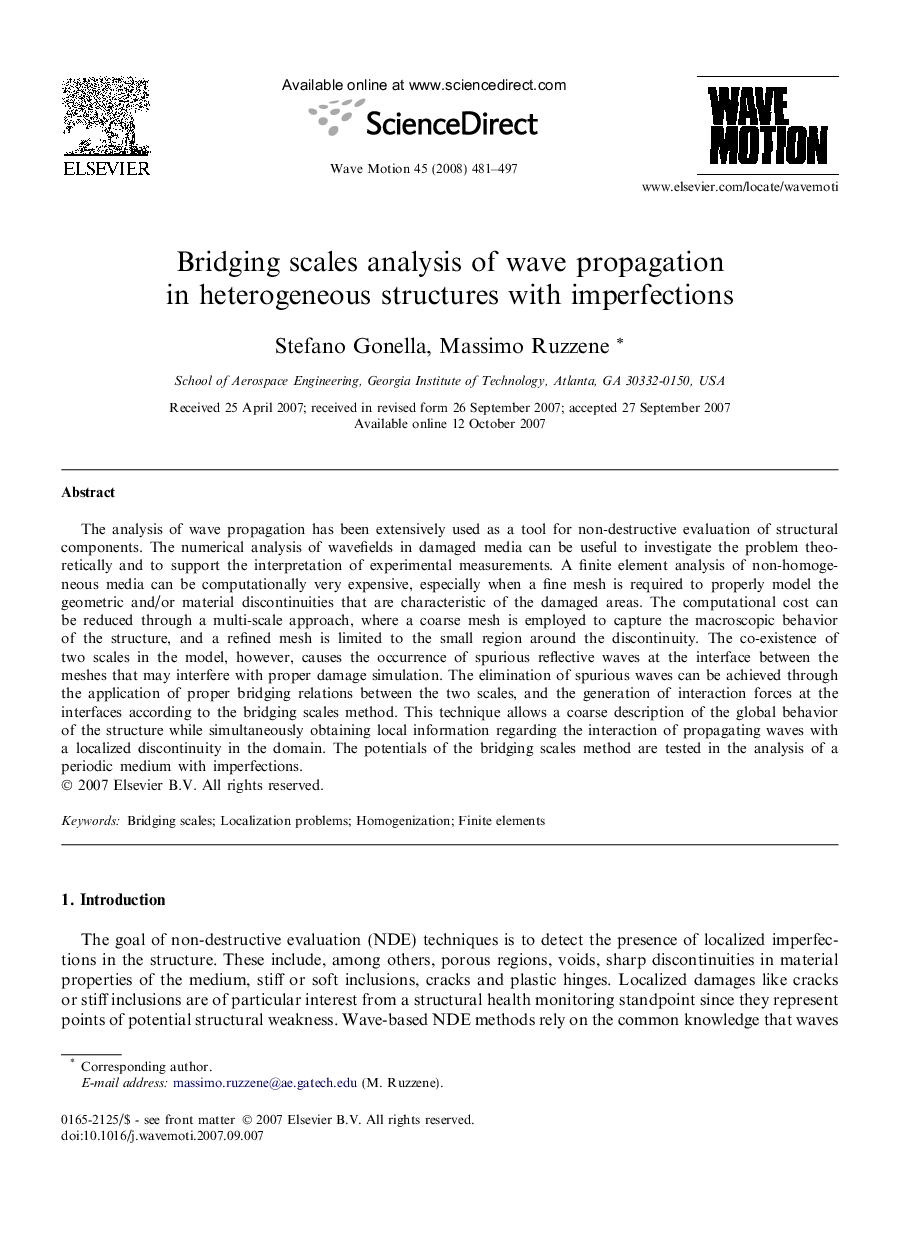| Article ID | Journal | Published Year | Pages | File Type |
|---|---|---|---|---|
| 1900587 | Wave Motion | 2008 | 17 Pages |
The analysis of wave propagation has been extensively used as a tool for non-destructive evaluation of structural components. The numerical analysis of wavefields in damaged media can be useful to investigate the problem theoretically and to support the interpretation of experimental measurements. A finite element analysis of non-homogeneous media can be computationally very expensive, especially when a fine mesh is required to properly model the geometric and/or material discontinuities that are characteristic of the damaged areas. The computational cost can be reduced through a multi-scale approach, where a coarse mesh is employed to capture the macroscopic behavior of the structure, and a refined mesh is limited to the small region around the discontinuity. The co-existence of two scales in the model, however, causes the occurrence of spurious reflective waves at the interface between the meshes that may interfere with proper damage simulation. The elimination of spurious waves can be achieved through the application of proper bridging relations between the two scales, and the generation of interaction forces at the interfaces according to the bridging scales method. This technique allows a coarse description of the global behavior of the structure while simultaneously obtaining local information regarding the interaction of propagating waves with a localized discontinuity in the domain. The potentials of the bridging scales method are tested in the analysis of a periodic medium with imperfections.
